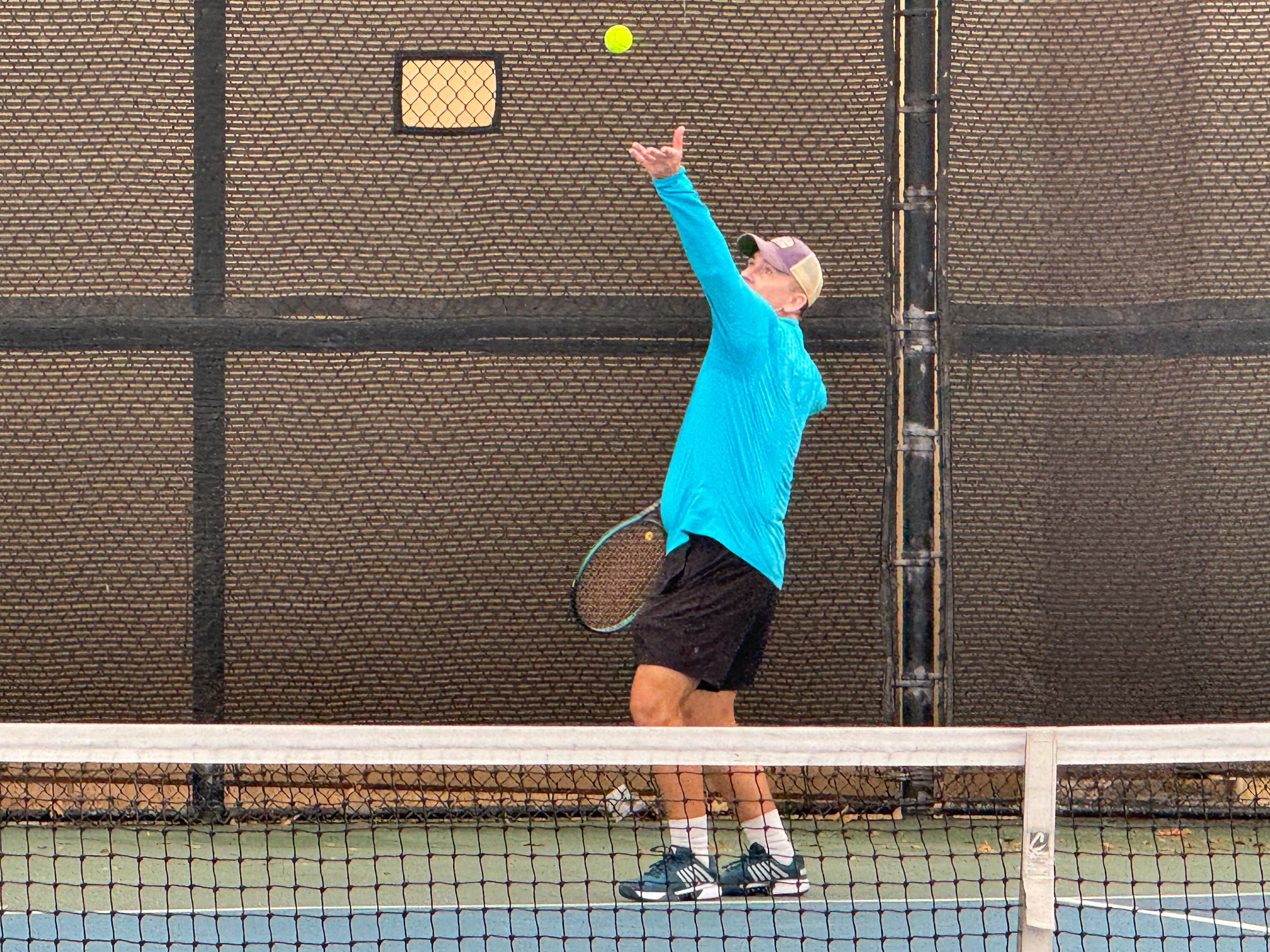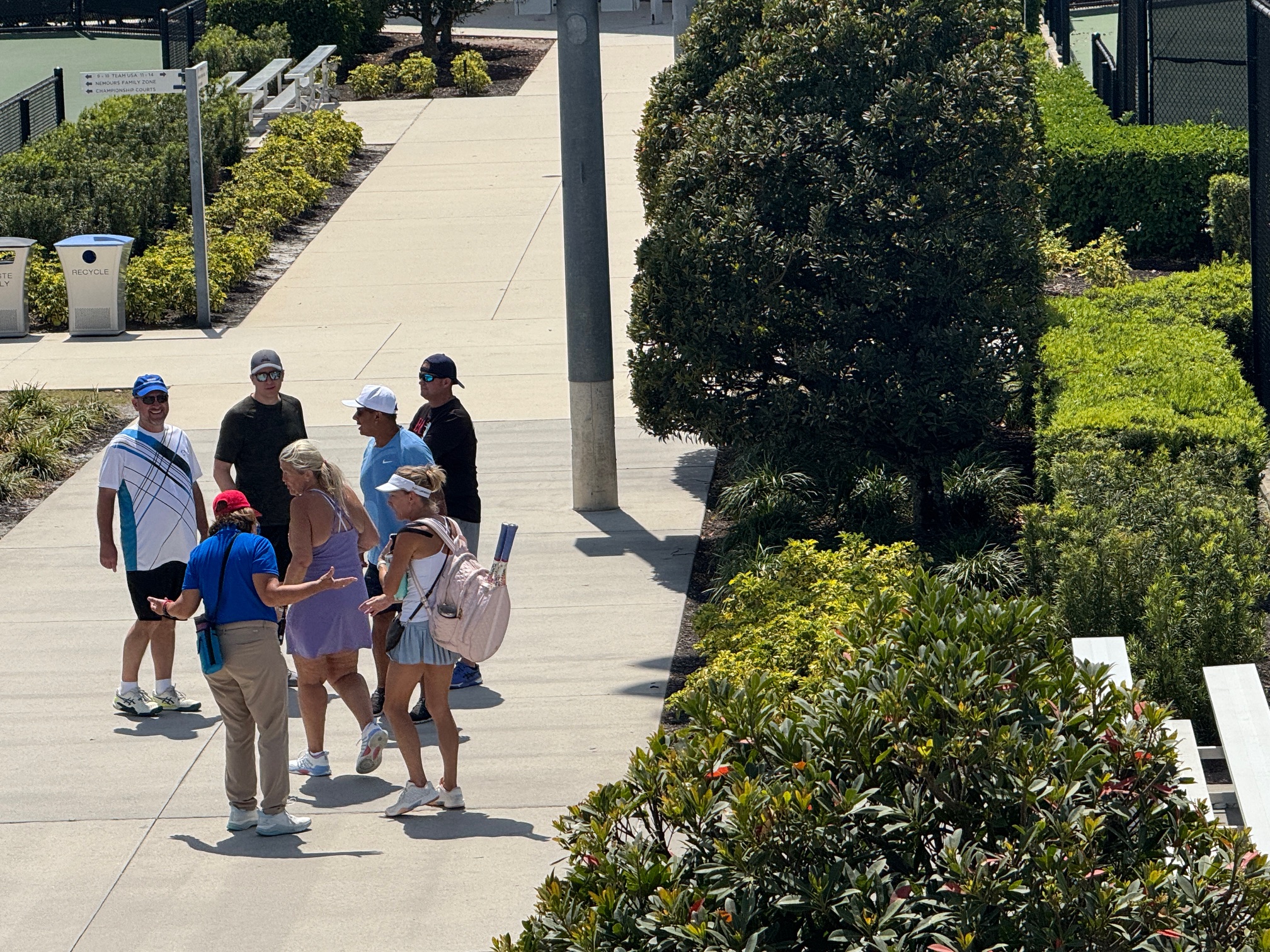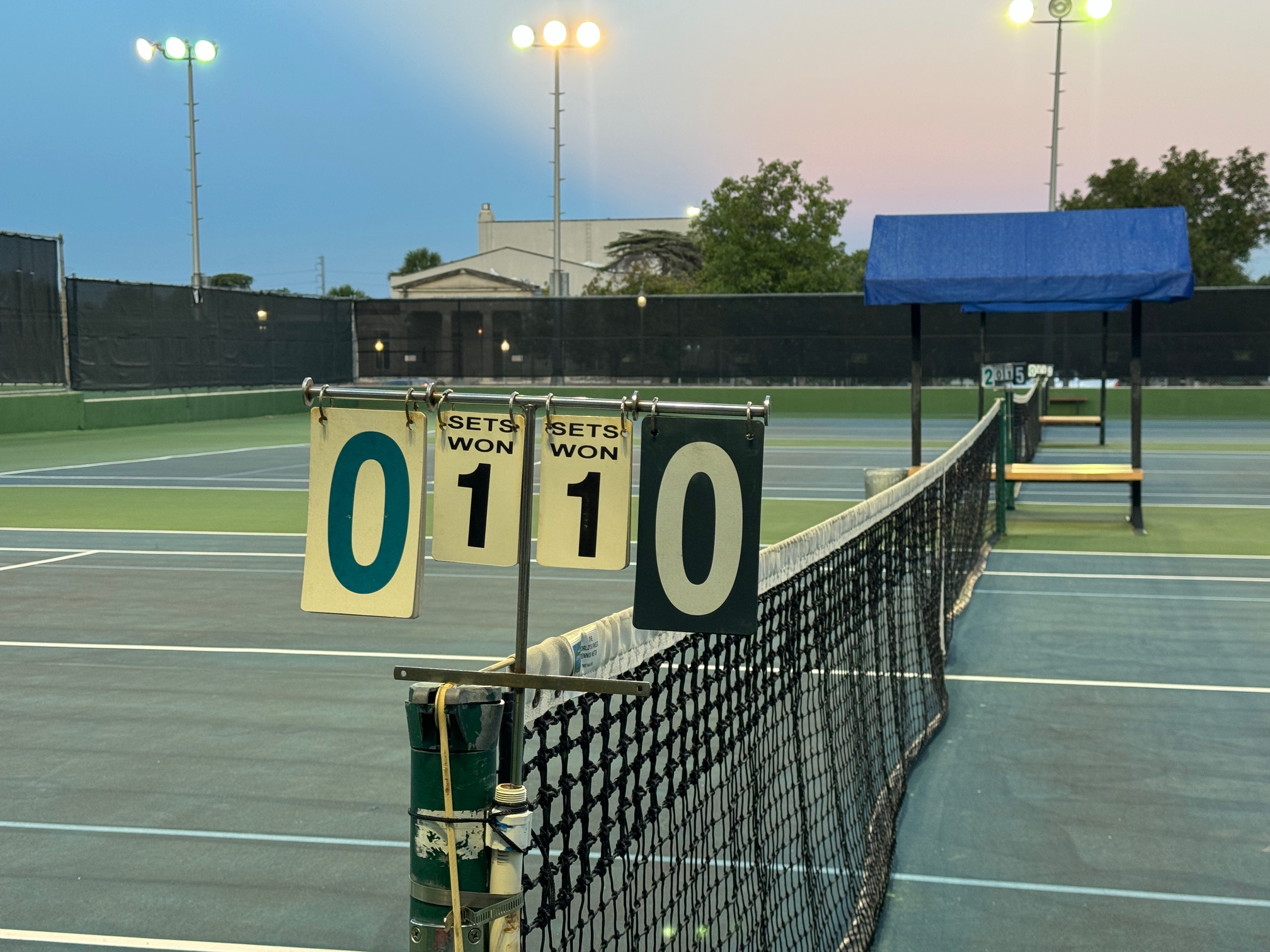Whenever I tell someone that Tri-Level isn’t USTA League, it is almost always regarded as yet another of my crazy takes on tennis. However, it is an absolute fact. The USTA League National Regulations [1] define the formats of play, and Tri-Level simply isn’t a part of it. For anyone who wants to look that up for themselves, the official formats for USTA League play are defined within a table in USTA League Regulation 1.04A.
Last Wednesday, in “Suddenly Suspension Points,” I wrote about a situation that transpired at the Tom Fey Tri-Level National Invitational earlier this year. Two players walked away from the event with 8 suspension points for violating a “rule” imposed by the event organizers. To fully break that down, it is essential to know which rulebooks apply and which of those have precedence. In the case of National Invitationals, this takes us into an interesting gray area.
According to the informational page for the 2024 Tri-Level National Invitational [2], “USTA Rules and League Regulations and Friend at Court will be enforced during championships.” Unfortunately, that is an oversimplification of something that cannot possibly be true. Those two rulebooks contain separate and distinct regulations that cannot be simultaneously applied.
The USTA “Friend at Court” [3] is structured into seven parts. The first part is a verbatim reprint of the “ITF Rules of Tennis.” That is augmented by USTA comments on how those rules are interpreted for sanctioned play under the organization’s purview. Essentially, Part 1 contains the foundational rules of tennis matchplay.
The second part of the USTA “Friend at Court” is “The Code,” which is subtitled “The Players’ Guide to Fair Play and the Unwritten Rules of Tennis.” The Code is a USTA-specific document that defines the principles of goodwill that make it possible to play nice with others within the sport. The preamble to that section stipulates that “The principles in The Code apply in cases not specifically covered by the ITF Rules of Tennis or the USTA Regulations.”
Part 3 of the USTA “Friend at Court” is simply titled USTA Regulations. However, it is pretty clear from the preamble of that material that those Regulations are specific to tournaments. It is important to understand that the “Friend at Court” was created long before USTA League was invented. Consequently, the original USTA Regulations were singularly focused on tournament play because that was the only form of sanctioned tennis competition. (I previously made a brief foray into the history in “The End of an Era: 2023 USTA Friend at Court” for anyone interested in a little more detail.)
When USTA League was instantiated, a decision was made to create a separate set of Regulations independent of the “Friend at Court.” Initially, USTA League was seen as somewhat of a novelty, which likely made it too new for integration with the traditional tournament-based USTA Regulations. The creation of an independent document also allowed for updates and maintenance outside the annual revision cycle of the “Friend at Court,” which is best described as onerous.
This means that there are two independent sets of Regulations for each of the two primary USTA competitive formats. The tournament Regulations are Part 3 of the “Friend at Court,” while “USTA League Regulations” are codified into a separate document.
It is theoretically possible for an event to be played under both the USTA Regulations in the Friend at Court and the USTA League Regulations. However, that would require a detailed specification of which Regulations carry precedence for the many instances where there is significant divergence between the rules. There isn’t a published version of that for the Tri-Level National Invitational Tournament, and I would be willing to wager one does not exist for any format of play.
The USTA League Regulations seem to recognize the fundamental conflict between the two sets of rules. It is somewhat addressed in USTA League Regulation 1.02, “Governance.” Unfortunately, the language used is very clunky, and I suspect that most people stop reading at the word “Governance” anyway.
1.02 GOVERNANCE. The USTA LEAGUE REGULATIONS shall apply to the USTA League Program (USTA League). The FRIEND AT COURT – The USTA Handbook of Tennis Rules and Regulations, including Wheelchair Rules of Tennis; or any other USTA regulations; shall apply to all matches played in the USTA League (unless modified by these USTA LEAGUE REGULATIONS). In all matches played without officials, the USTA official publication, THE CODE, shall be observed. The USTA Point Penalty System shall be used at all championship levels.
2024 USTA League National Regulations
It would be more accurate and clear to say that USTA League is played under USTA League Regulations and then also precisely specify the relevant parts of the “Friend at Court.” That would include Part 1 and Part 2 but exclude Part 3. We won’t get into it in this series, but it should arguably also include Parts 4 and 5, which contain emergency care guidelines and officiating procedures.
This highlights an opportunity for the USTA to eliminate the gray area we are exploring in this series by using more precise language than broadly claiming that the “Friend at Court” applies in totality when it clearly does not. I don’t think what we are examining in this scenario is a Tri-Level specific issue, but rather a case where the overall governance language isn’t clear. That has led to confusion at many levels.
This post started by asserting that Tri-Level isn’t a USTA League event but a USTA National Invitational tournament. In fact, when we eventually examine the rules that were ultimately applied in the situation that transpired at this year’s event, we will discover that they were pulled from the USTA League Regulations.
I believe that places this event into somewhat sketchy territory. There is an argument to be made that the Tom Fey Tri-Level National Invitational is actually a team tournament event and should fall under Part 3 of the “Friend at Court” as the authoritative rulebook. Whether the events that transpired at Indian Wells were unsportsmanlike, we will eventually find which rulebook applies is an academic distinction. The same is not the case for suspension points.
I plan to pick back up on this topic this Friday, April 12, by examining the implication of sanctioning requirements for tournaments versus the explicit absence of that for USTA League. Once again, this is an area that places National Invitational tournaments in a gray area.
- 2024 USTA League National Regulations, USTA Resource Document, March 14, 2024.
- USTA Tri-Level National Invitational Welcome Page, USTA SoCal Hosted Informational Page, last viewed April 6, 2024.
- Friend at Court: The Handbook of Tennis Rules and Regulations, USTA, 2024
- USTA Adult and Family Tournament, Ranking, & Sanctioning Regulations, USTA Regulation, as amended December 14, 2023.
- USTA League Suspension Point System Calculation Tables, USTA Resource Document, February 6, 2024.
- USTA League Suspension Point System 2024, USTA Resource Document, February 6, 2024.
- USTA League Suspension Point System Frequently Asked Questions, USTA Resource Document, March 23, 2023.




That’s interesting and you’re right that tri-level is listed as a league in the National Regulations. But, it is listed as a league in local/sectional regulations. So, it is a league, but then if you make Nationals, it kinda isn’t. Or the Nationals event is an Invitational, which is a separate entity I guess.
But, matches are rated at the National event. They used to not be, but that changed at some point. I want to say around 2019 as the matches at Nationals wouldn’t be entered into tennislink, but then one year they started to be. It’s all pretty confusing with tri-level, especially with how the tournament is run.